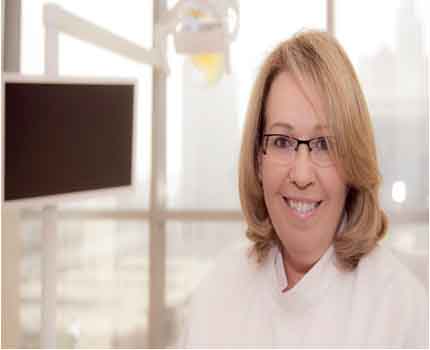 Q. What is Neuromuscular Dentistry?
Q. What is Neuromuscular Dentistry?
A. Neuromuscular dentistry or NMD evaluates how your muscles, teeth, bite and joints all work together, in order to achieve an optimal occlusion (bite). It is a highly focused field of dentistry, which considers the physiologic aspects of head and neck muscles that control the positioning and function of the jaw called Temporomandibular joint “TMJ”. While traditional dentistry focuses on the teeth per se; NMD aims to establish, (or reestablish) your natural or ideal jaw position.
If the bite is off, it can lead to many problems from excessive teeth wear to severe pain, including TMJ. Below are but a few of the more common symptoms that may possibly be associated with your bite. An imperfect bite can be the cause of:
- Headaches
- Migraines
- Sore neck pain
- Ringing in the ears
- Numbness of the fingertips
- Limited mouth opening
- Difficulty to swallow or chewing
- Worn, chipped teeth
- Jaw joint clicking or popping
If you suffer from one or more of the aforementioned symptoms, seek the advice from a neuromuscular dentist to confirm or rule out malocclusion (bad bite) as a potential cause for your pain. Having a correct bite is the foundation of oral health.
Q. How does it work?
A. With my advanced training as a neuromuscular dentist, I am able to provide patients a complete diagnosis and treatment of bite dysfunction. There are several stages for a Neuromuscular Dental Diagnosis and Treatment, all pain free. These include:
- Full physical examination of your head, neck and teeth
- An impression of your teeth, wherein photographs are taken
- Bite evaluation and analysis with cutting-edge device and equipment to relax all the facial muscles around the jaw, the neck and the shoulders and perform a precise diagnosis
- Teamwork with a Chiropractor or Osteopath may be needed also during the treatment
Essentially neuromuscular dentistry treats TMJ and related symptoms by correcting the bite and realigning the jaw. I will determine the optimal position of the jaw by measuring the relaxed position of the head and neck muscles, and then reposition the jaw to achieve those exact measurements. The malocclusion is corrected in a variety of treatments, among them by adjusting the bite through coronoplasty or through Orthodontics treatment or braces, among others.
Patients of neuromuscular dentistry experience a range of benefits from decreased or eliminated pain and discomfort to better overall health, longer lasting restorations, leaving the patient with a great new smile. Many times, patients who have chosen to restore their teeth to the optimal jaw position are rewarded with a beautiful smile and a more youthful appearance. In fact when the bite is optimized, a patient’s face will sometimes appear lengthened giving them the look of a person who had benefited from a facelift.

